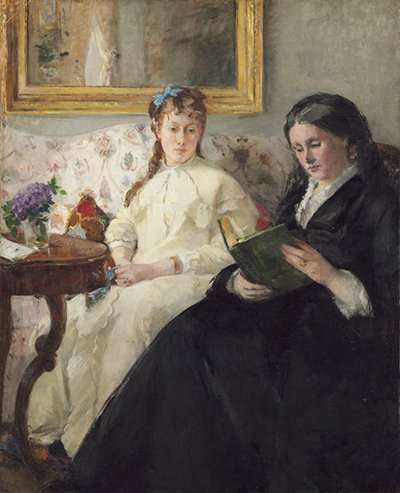The Mother and Sister of the Artist was executed by Berthe Morisot between the years of 1869 and 1870. It remains one of her most personal pieces and is now owned by The National Gallery of Art in the US.
Berthe Morisot made use of friends and family in a number of personal portraits and we see the same here in The Mother and Sister of the Artist. Edma, her sister, is dressed in white and is visiting her family in order to prepare for the birth of her first child. Morisot would later create The Cradle, which captured her sister again, but this time alongside the new born. It was entirely normal during this period for women to be taken in by their extended family in order to care for both the mother and baby in its early months. Often the husbands would be away working or at war, and it was not considered right to leave the mother to fend for herself.
A lesser known aspect of Morisot's role in the Impressionist movement is that she provided financial support from time to time in order to allow the group to continue to exhibit their work. Whilst they are all household names today, this was an early stage in their development and promotion, when finances were relatively tight. Caillebotte also provided considerable time and effort in promoting their cause too, and initially was more famous for that than actually the work that he had exhibited. Morisot's The Mother and Sister of the Artist was exhibited in 1874, which was the first ever Impressionist exhibition and a truly momentous occasion, with the benefit of hindsight. It had also been exhibited in 1870 at the Salon in Paris.
The most intriguing aspect of this painting derives from correspondence between Berthe and several friends and family. She was initially nervous about submitting this piece and was aided by close friend Edouard Manet. The artist visited prior to its submission and made considerable amendments to the figure on the right hand side. Those well acquainted with the styles of both artists should be able to spot the contrasts in this completed painting, but for the rest of us, particularly when looking at a photograph of the piece, it is hard to spot the different styles used in the two figures.




